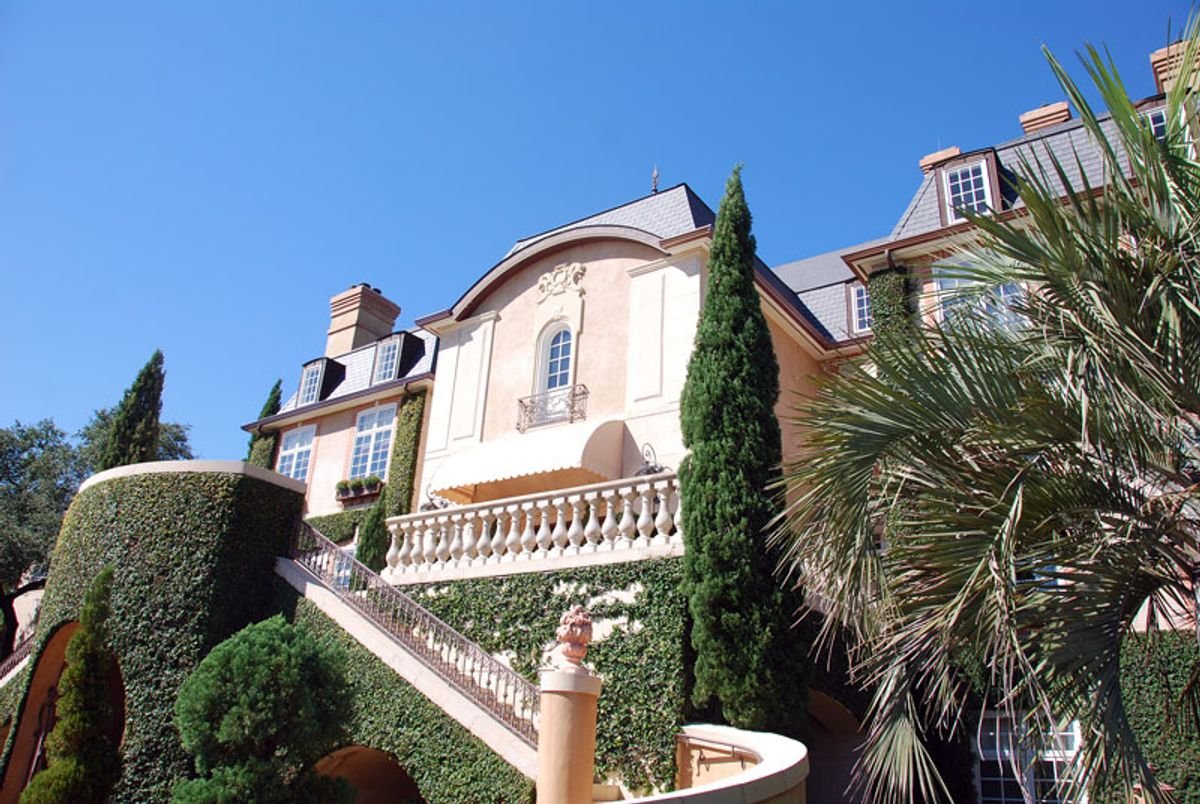Trending Now: Eco-Friendly Outdoor Living Spaces That Wow
March 14, 2024 | by myoutdoorsfamily.com

As we delve into the world of outdoor living, the trend of eco-friendly outdoor spaces is capturing the imagination of homeowners and designers alike. With sustainability at the forefront, these outdoor havens are not only visually stunning but also embody a commitment to environmental responsibility. This article explores the latest trends in creating outdoor living areas that are both luxurious and kind to the planet, offering inspiration and practical solutions for those looking to enhance their outdoor experience.
Key Takeaways
- Incorporating natural elements and sustainable materials creates outdoor spaces that are both elegant and environmentally conscious.
- Advancements in solar technology and eco-friendly power solutions are revolutionizing the way we energize our outdoor living areas.
- Smart technology is being seamlessly integrated into outdoor designs, offering comfort and convenience without compromising on green principles.
- Privacy and shelter can be achieved through creative use of natural fencing and living roofs, contributing to the ecosystem while providing seclusion.
- The future of outdoor aesthetics is bright with the integration of solar designs, from landscape elements to poolside features and furniture.
Aesthetic Elegance in Outdoor Spaces

Incorporating Natural Elements for Timeless Charm
The allure of natural elements in outdoor living spaces is not just about aesthetics; it’s about creating a harmonious blend with the environment. Warm wood accents and the use of stone or metal can transform a simple backyard into an eclectic and inviting retreat. These materials not only add a touch of nature but also ensure durability and timelessness.
By integrating natural materials, homeowners can achieve a seamless transition between indoor and outdoor living. The tactile experience of wood beams, the solidity of stone, and the sheen of metal enrich the sensory palette of any outdoor space.
Incorporating these elements doesn’t have to be overwhelming. Here are a few practical tips:
- Consider the local climate and choose materials that will age gracefully.
- Use reclaimed or sustainably sourced wood to add character and reduce environmental impact.
- Combine different textures and materials to create visual interest and contrast.
- Don’t shy away from modernizing traditional materials to fit your personal style.
Remember, the key to a successful outdoor design is in the details. It’s about crafting a space that feels both personal and in tune with nature’s own design language.
Furniture and Decor: Blending Style with Sustainability
When it comes to creating an outdoor living space that is both stylish and sustainable, selecting the right furniture and decor is crucial. Choosing pieces made from durable and sustainable hardwoods, such as FSC-certified teak or eucalyptus, ensures longevity and environmental responsibility. These materials are known for their resistance to warping and cracking, making them ideal for outdoor use.
The aesthetic appeal of an outdoor space is significantly enhanced by the thoughtful combination of furniture and decor that not only looks good but also adheres to eco-friendly principles.
Incorporating warm wood accents can add a touch of natural elegance to the area, while also embracing the trend of using materials that offer a low-maintenance and welcoming facade. The use of recycled products and materials with low embodied carbon contributes to a greener footprint and aligns with contemporary eco-conscious design philosophies.
Here is a list of sustainable materials and their benefits:
- FSC-certified teak: Durable, weather-resistant, and sustainably sourced.
- Eucalyptus: Strong, affordable, and less demanding on the environment.
- Recycled plastics: Reduces waste and often requires less energy to produce.
- Reclaimed wood: Adds character and reduces the demand for new timber.
- Bamboo: Rapidly renewable and versatile.
By integrating these materials into your outdoor furniture and decor, you can create a space that is not only visually appealing but also kind to the planet.
Lighting and Accessories: Elevating Ambiance Responsibly
Thoughtfully designed outdoor lighting does more than illuminate your garden; it enhances the overall ambiance of your outdoor living space. Strategic illumination can spotlight architectural features, improve safety, and extend the time you spend enjoying your backyard.
When selecting lighting options, consider environmentally-friendly choices such as LED fixtures and solar-powered lights. These options not only reduce energy consumption but also offer long-lasting performance. Here’s a quick guide to eco-conscious lighting choices:
- LED Lights: Energy-efficient and durable, with a variety of designs to fit any style.
- Solar Path Lights: Ideal for walkways, requiring no wiring and using renewable energy.
- Motion Sensor Lights: Provide light only when needed, conserving energy.
- String Lights: Create a festive atmosphere using solar or LED options.
Embracing eco-friendly lighting solutions is a step towards sustainable living without compromising on style or functionality. By integrating these options, you can create a responsibly lit outdoor area that’s both inviting and in harmony with the environment.
Harnessing Eco-Friendly Power in Your Backyard
Solar Lights and Energy Solutions for Outdoor Areas
Harnessing the power of the sun, solar lights have become a staple in eco-friendly outdoor living. These lights offer a sustainable way to brighten up your garden or patio, charging by day to deliver free illumination at night. With a variety of designs available, from path lights to decorative string lights, solar lighting can enhance both the functionality and aesthetics of your outdoor space.
Solar-powered energy solutions extend beyond lighting. Many homeowners are now exploring options like solar panels for electricity and solar water heaters. These systems can significantly reduce reliance on traditional power sources, leading to lower utility bills and a smaller carbon footprint.
Embracing solar energy for outdoor areas not only benefits the environment but also adds value to your property.
When considering solar lights, it’s important to look for products with replaceable LED bulbs and rechargeable batteries, such as the VOLT Lighting LED bistro string lights, which are designed for outdoor events and parties. Here’s a snapshot of the popularity of outdoor solar lights based on web searches:
| Trend | Number of Searches |
|---|---|
| Outdoor Solar Lights | 1,711,500 |
Sustainable Power Sources for Outdoor Living
As we embrace the green revolution in our backyards, sustainable power sources are becoming increasingly vital. These eco-friendly options not only reduce our carbon footprint but also offer long-term cost savings.
- Solar panels: Harness the sun’s energy to power outdoor lights, water features, and even appliances.
- Wind turbines: Ideal for larger properties, they can generate significant power for outdoor spaces.
- Kinetic pavers: Generate electricity with every step, perfect for walkways and patios.
Embracing these sustainable power sources is not just about being eco-conscious; it’s about creating a self-sufficient outdoor living space that thrives in harmony with nature.
For those interested in DIY projects, the title ’12 Great DIY Solar Energy projects to harness Sustainability’ offers a glimpse into the potential of personal energy projects. From building a solar water heater to creating solar-powered outdoor lighting, the opportunities for integrating sustainable power into your outdoor living are boundless.
Innovative Eco-Friendly Gadgets for Garden Enthusiasts
The modern gardener’s toolkit is evolving, with a surge in eco-friendly gadgets that not only enhance the gardening experience but also promote sustainability. From smart irrigation systems that conserve water to solar-powered garden lights, these innovations are designed to reduce environmental impact and increase efficiency.
- Smart irrigation controllers
- Solar-powered garden lights
- Biodegradable planters
- Energy-efficient garden tools
Embracing these green technologies can lead to a more sustainable and enjoyable gardening practice.
Moreover, the market now offers a variety of sustainable gardening products, such as flower pots and planters made from recycled materials, and garden tools engineered to last longer and reduce waste. These products not only support a greener lifestyle but also add a touch of sophistication to any garden space.
Enhanced Outdoor Living: Comfort Meets Green Technology

Smart Outdoor Spaces: Technology That Respects the Environment
The integration of smart technology into outdoor living spaces is not just about convenience; it’s about creating an environment that harmonizes with nature. Smart irrigation systems, for example, optimize water usage by adjusting to real-time weather conditions, preventing wastage and promoting plant health.
Eco-conscious homeowners are now looking towards intelligent systems that can be controlled via smartphones or voice commands, ensuring that their garden’s ecological footprint is as light as possible.
Innovations in eco-friendly tech for outdoor spaces include:
- Energy-efficient LED lighting that responds to motion and ambient light
- Automated composting units that turn organic waste into garden-ready fertilizer
- Rainwater collection systems that integrate with smart watering devices
These advancements not only add value to the property but also contribute to a sustainable lifestyle, making the most of resources while minimizing impact on the planet.
Eco-Friendly Outdoor Kitchens and Entertainment Areas
The concept of outdoor kitchens has evolved significantly, with 2024’s design trends leaning heavily towards eco-friendly and smart technology integration. These spaces are not just about grilling; they are fully functional cooking areas that blend seamlessly with the natural environment.
- Modular setups allow for personalized configurations, catering to specific entertainment needs.
- The use of sustainable materials is on the rise, ensuring that your outdoor kitchen is as green as it is chic.
- Smart appliances bring convenience and efficiency, reducing energy consumption and waste.
In the pursuit of creating the ultimate outdoor entertainment area, incorporating eco-friendly materials and technology is paramount. This not only enhances the functionality of the space but also ensures that it aligns with environmentally conscious values.
Gazebos and poolside patios are becoming increasingly popular, providing shelter and a defined location for cooking and dining. These structures are often designed with sustainability in mind, using materials that are durable and have a low environmental impact. The integration of solar lighting and energy-efficient appliances further contributes to the eco-friendly ethos of these outdoor living spaces.
The Role of Green Roofs and Living Walls in Outdoor Design
Green roofs and living walls are not just visually stunning; they are pivotal in introducing biodiversity and biophilia into urban and residential spaces. These eco-friendly installations offer a multitude of benefits, from improving air quality to enhancing thermal insulation.
- Green roofs serve as natural insulators, reducing the need for artificial heating and cooling. They also manage stormwater runoff, providing a buffer during heavy rainfall.
- Living walls, on the other hand, can transform any vertical space into a lush, oxygen-generating canvas. They are particularly effective in urban areas where ground space is limited.
By integrating green roofs and living walls into outdoor design, homeowners can create a sustainable ecosystem that supports local wildlife and contributes to the overall health of the environment.
Companies like Viritopia specialize in creating these green installations, tailoring designs to meet the specific needs of each space. Their expertise ensures that each project not only enhances the aesthetic appeal of an area but also maximizes its ecological function.
Privacy and Shelter: Creating Secluded Eco-Sanctuaries

Natural Fencing Options and Their Environmental Benefits
When considering natural fencing options, the environmental benefits are as compelling as the aesthetic ones. A classic choice, such as a cedarwood fence, offers a timeless look while being one of the most affordable and eco-friendly options. Cedarwood is preferred for its natural beauty and durability, making it a sustainable choice for privacy fences.
In the realm of innovative eco-sanctuaries, bamboo fences stand out for their sleek, exotic look and robustness. Durable and versatile, bamboo is not only resistant to pests but also a renewable resource that grows quickly, reducing the environmental impact.
For those looking to blend eco-consciousness with creativity, recycled fences provide an excellent opportunity. Salvaged materials like unused metal or wall sheet paneling can be repurposed into unique fencing solutions, reducing waste and the need for new resources.
The integration of living elements into fencing design not only enhances privacy but also promotes biodiversity. Incorporating hedges or other plants at the base of a fence creates a harmonious balance between constructed and natural environments.
Lastly, stone walls offer a robust and low-maintenance alternative. Although initially more costly, their longevity and minimal upkeep make them an environmentally sound investment over time.
Green Living Roof Gazebos and Pergolas
Green living roof gazebos and pergolas are not just a statement of style, but also a commitment to environmental stewardship. By integrating vegetation into the design, these structures offer a natural insulation layer, promoting biodiversity and improving air quality. They serve as a habitat for wildlife and help in rainwater absorption, reducing runoff and promoting groundwater recharge.
The use of sustainable materials in the construction of gazebos and pergolas is essential. Western Red Cedar, known for its durability and resistance to decay, is a popular choice for eco-conscious homeowners. It not only provides a rustic charm but also ensures a reduced carbon footprint.
For those seeking versatility in their outdoor living spaces, a gazebo with a retractable roof offers the perfect blend of sunlight and shade. This feature allows for an adaptable environment, catering to the ever-changing needs of outdoor relaxation and entertainment. Moreover, incorporating a built-in outdoor kitchen extends the functionality of your gazebo, making it the heart of poolside gatherings and alfresco dining.
Eco-Friendly Materials for Durable and Private Outdoor Retreats
Creating a secluded outdoor retreat not only enhances privacy but also contributes to a sustainable lifestyle. Eco-friendly materials are at the forefront of this movement, offering durability and environmental benefits. For instance, bamboo and wood are popular choices for outdoor privacy screens, providing a natural look that blends seamlessly with the surroundings.
When selecting materials for outdoor retreats, consider their longevity and impact on the environment. Opting for low-toxicity and low-embodied carbon materials can significantly reduce the ecological footprint of your outdoor space.
Sustainable materials like clay plaster and timber I-joists filled with blown cellulose are gaining traction in eco-conscious designs. These materials not only offer excellent insulation but also ensure that the retreat remains in harmony with nature. To further enhance privacy, tall plants or shrubs can be used to create a living barrier that also supports local biodiversity.
Solar Integrated Design: The Future of Outdoor Aesthetics

Integrating Solar Panels into Landscape Design
The seamless integration of solar panels into landscape design not only enhances the aesthetic appeal of outdoor spaces but also contributes to a sustainable environment. Solar Landscapes are becoming increasingly popular as they offer a dual benefit of generating clean energy while preserving the natural beauty of the surroundings.
- Adaptive Integration: A methodology that ensures solar installations complement the regional character of the landscape.
- Aesthetic Integration: Solar panels can be incorporated into pergolas, gazebos, and even artistic structures.
- Functional Integration: Beyond energy generation, solar panels provide shade and can be used as structural elements.
The goal is to create outdoor spaces that are both functional and harmonious with nature, achieving a balance between technology and the environment.
Understanding the solar installation process is crucial for homeowners who wish to adopt this eco-friendly approach. It involves careful planning and consideration of factors such as sunlight exposure, panel angle, and landscape aesthetics to ensure optimal energy efficiency and visual harmony.
Solar-Powered Water Features and Poolside Innovations
The integration of solar-powered water features is revolutionizing the way we think about poolside aesthetics and functionality. Harnessing the sun’s energy, these features offer an eco-friendly solution to traditional electrically powered fountains and waterfalls, creating a serene atmosphere without the added carbon footprint.
- Solar-powered fountains
- Solar waterfalls
- Floating solar lights
- Solar pool pumps
These innovations not only contribute to a sustainable environment but also reduce long-term energy costs. The use of solar pool pumps, for example, can significantly decrease electricity usage, making them a smart investment for eco-conscious homeowners.
Embracing solar-powered water features means investing in the beauty and tranquility of your outdoor space while committing to a greener future.
The Rise of Solar Outdoor Furniture and Decor
As we embrace the solar revolution in outdoor living, the furniture and decor we choose are not just about aesthetics but also about sustainability. The latest trends indicate a significant shift towards solar-powered options that offer both functionality and environmental benefits.
- Solar benches that charge your devices while you enjoy the outdoors
- Tables with integrated solar panels for evening illumination
- Decorative solar lights that add a whimsical touch to garden paths
These innovations are not only energy-efficient but also reduce the reliance on traditional power sources, making them a smart choice for eco-conscious consumers.
Embracing solar furniture and decor is a step towards a greener, more sustainable outdoor lifestyle.
With the upcoming 2024 trends, we see a return to nature-inspired designs. Furniture crafted from natural materials, earthy color palettes, and organic shapes create a harmonious blend with the outdoor environment, further enhancing the appeal of solar-integrated pieces.
Conclusion
As we’ve explored the myriad of trends in eco-friendly outdoor living spaces, it’s clear that the future of our backyards and patios is both stylish and sustainable. From the integration of solar-powered features to the aesthetic elegance of green living roofs, homeowners are increasingly seeking to create outdoor sanctuaries that not only wow their guests but also contribute positively to the environment. The shift towards functional, feature-rich spaces that blend seamlessly with nature reflects a deeper understanding of the importance of outdoor living areas in our daily lives. Whether it’s through innovative design, eco-friendly power solutions, or the creation of private, resort-like experiences, the trends we’ve discussed offer a glimpse into a future where outdoor living is a harmonious extension of our eco-conscious lifestyles. As we continue to embrace these trends, we not only enhance our own living spaces but also take a step forward in promoting a greener, more sustainable world.
Frequently Asked Questions
How can I incorporate natural elements into my outdoor living space for a timeless look?
Incorporating natural elements can be achieved by using materials like stone, wood, and plants. Design features such as rock gardens, wooden benches, and native plant landscaping can enhance the charm and create a seamless transition between your home and nature.
What are some eco-friendly furniture and decor options for outdoor spaces?
Look for outdoor furniture made from sustainable materials such as reclaimed wood, recycled plastic, or responsibly sourced timber. Opt for decor that has been produced with a low environmental impact, such as solar-powered lighting and biodegradable planters.
What innovative eco-friendly gadgets are available for garden enthusiasts?
Garden enthusiasts can explore gadgets like solar-powered irrigation systems, composting tools that speed up the process, and smart sensors that monitor plant health and soil moisture levels, all designed to make gardening more sustainable and efficient.
How can I create a private outdoor retreat that’s also environmentally friendly?
Creating a secluded eco-sanctuary can involve using natural fencing options like bamboo or living hedges, incorporating a green living roof gazebo for shelter, and choosing outdoor materials that are durable and sustainably sourced.
Can solar panels be aesthetically integrated into landscape design?
Absolutely! Solar panels can be integrated into landscape design by using solar shingles for roofing, incorporating sleek, ground-mounted panels among garden features, or even opting for artistic solar sculptures that provide both power and visual interest.
What are the benefits of green roofs and living walls in outdoor spaces?
Green roofs and living walls offer numerous benefits including improved air quality, natural insulation, habitat creation for wildlife, and a reduction in stormwater runoff. They also add a visually stunning element to any outdoor living space.
RELATED POSTS
View all



